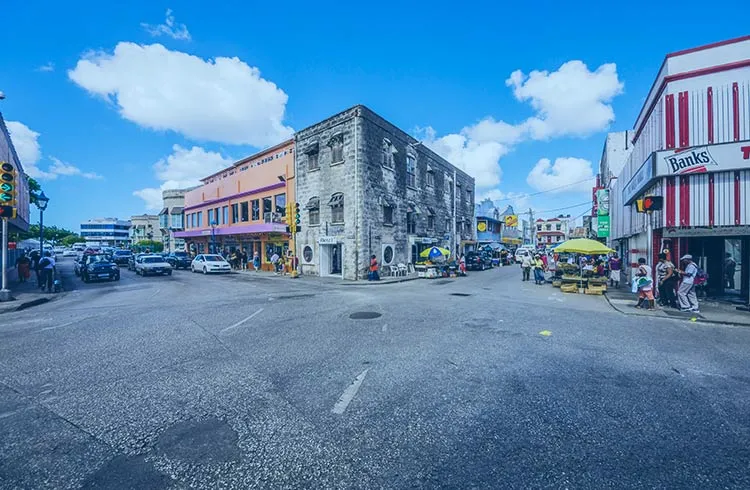Top 5 Montenegro Attractions
Many travelers come to Kotor as a day trip from Dubrovnik or on a cruise, but it’s well worth spending a few nights here. Its fairy tale-like Old Town is a UNESCO World Heritage Site.
The old walls are impressive, and it’s fun to get lost in the laneways. The Maritime Museum won’t be everyone’s cup of tea, but it documents the region’s maritime history with model ships and artifacts.
1. St. Tryphon Cathedral
The Cathedral of Saint Tryphon is a colossal Romanesque structure with a unique mix of architectural styles and a treasure trove of religious art. This iconic place of worship is the seat of the Catholic bishop of Kotor and has a rich history that spans over centuries. In addition to its beautiful architecture, the cathedral is home to a remarkable collection of art paintings and sacred relics.
The most important of these relics is the Glorious Head of Saint Tryphon, which is venerated as a miracle and can be found in the reliquary chapel. It’s surrounded by a number of other relics preserved in limb-shaped silver, wood, and glass containers.
The Cathedral also has an impressive collection of gold and silver artworks crafted by local artisans. A tour of the cathedral offers insights into the cultural traditions that shaped the church and city. Admission fees are modest and help preserve this historic landmark. Guests can admire the intricate frescoes and ornate icons while learning about the cathedral’s historical significance. The cathedral is open to visitors year-round and guided tours are available in several languages.
2. Maritime Museum
The city’s main museum may not be everyone’s cup of tea, but it’s worth a visit to explore Montenegro’s rich maritime history through models and other artifacts. It also houses the 12th-century Romanesque St. Tryphon’s Cathedral, a pink sandstone cathedral with impressive frescoes.
The South Gate might sit tucked away in the back of Old Town, but it’s one of the most picturesque entry points into the medieval walled city. With its bastion, fortified passageway, and drawbridge, it feels like entering a medieval castle.
From the city walls, you can head to Perast, an adorable coastal town on the bay’s western shore. It’s best reached by public bus—look for Blue Line buses near the Sea Gate—which costs about EUR1. Group or private boat tours of the 17th-century Our Lady of the Rocks church on an artificial island are available.
If you’re a foodie, be sure to stop at Kotor’s Farmers Market, where vendors sell local produce, meat, fish, preserves, and wine. The place is also a good spot to stock up on souvenirs for loved ones back home.
3. St. Luka’s Church
Located in the Bay of Kotor (Boka Kotorska), considered Europe’s southernmost fjord, the old Mediterranean port city of Kotor is an unmissable destination. Its iconic stone walls, red-tiled roofs, culinary offerings, and affordable prices make it a must-visit for travelers.
Originally constructed in the 9th and 14th centuries by the Illyrians and then the Venetians, the town’s walls still surround its Old Town. Inside the walls is St. Luka’s Church, a 12th-century Romanesque structure that features impressive frescoes.
The Maritime Museum won’t be everyone’s cup of tea, but it documents the region’s nautical history with model ships and paintings. The cheapest way to visit is outside of peak hours when you can avoid the EUR8 ticket fee.
From Kotor, you can also take a public bus to the adorable coastal town of Perast. The Blue Line bus leaves from a stop in front of the Sea Gate and costs around EUR1. Another great option is to take a three-hour boat tour that visits Perast, Our Lady of the Rocks Island, and a submarine bunker.
4. San Giovanni Fortress
Located above the old town, San Giovanni Fortress is one of Kotor’s most impressive landmarks. The fortress has been a symbol of Montenegro’s strength and resilience throughout the centuries. It has been under the rule of many different cultures, including Illyrians, Romans, Venetians, and Austrians. The fortress’s walls, towers, and citadels have become a UNESCO World Heritage Site.
The walk to the castle is a wonderful way to see the city of Kotor and enjoy its stunning scenery. It’s a challenging hike, but the views are worth it. The best time to visit the castle is in spring and autumn when the weather is cooler and less crowded.
It’s a good idea to bring your camera with you, as the fortress provides some amazing photos. Taking a stroll around the fortress is also very relaxing. If you want to have a drink or snack, head to Bandiera Authentic Pub for some great Montenegrin wine and tasty food. The restaurant has a very nice atmosphere and is reasonably priced.
For an even more breathtaking panorama, don’t miss the best view of Kotor from the city’s lesser-known scenic spots.
5. Tivat
Coastal Tivat features stunning beaches like Plavi Horizonti and Zanjice, where you can swim, snorkel, or just soak up the sun. The sand is soft and has healing properties, while the gentle sloping water makes it perfect for families. The surrounding pine forests and olive groves add to the peaceful atmosphere.
Those interested in culture can visit the Renaissance Buce Palace Museum, located in the heart of Tivat. The former summer residence of the noble Buce family features old stone walls and an impressive collection of art from contemporary local artists.
Another must-see spot is the Church of St. Anton, built in 1373. Located in the Kalimanj area, this church features an inscription that dates it to that year. You can also see an old Austro-Hungarian fortress that was once used to defend Kotor and Tivat from each other.
Each summer, Tivat comes alive with colour and music at the International Carnival. This event celebrates Montenegrin traditions and gives visitors a taste of the local culture. Other festivals include the Bokeljska Night, a traditional event in August that involves parades of decorated boats and music.
If you’re exploring more of the bay area, check out our favorite 5 places to see in the Bay of Kotor, including charming towns and island gems.

